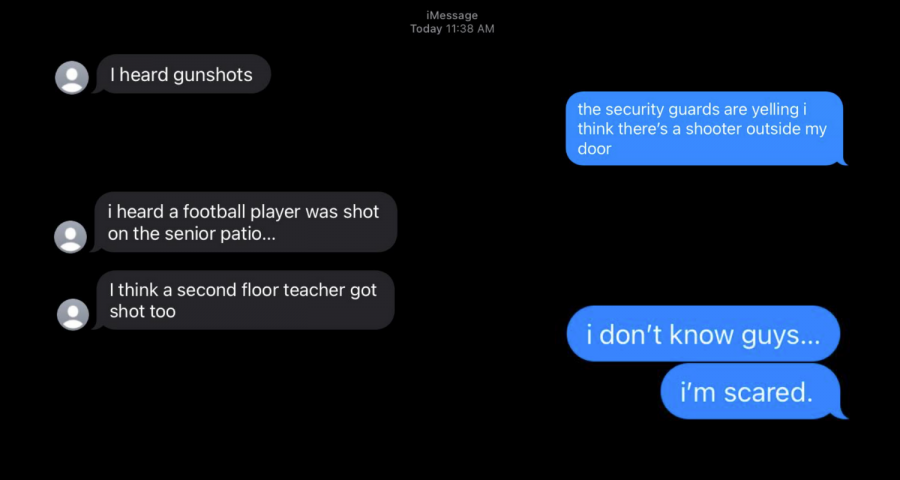Lockdown Lies; How Misinformation Harms
Around 11:30 a.m. on Oct 2, Principal Nancy Rousseau called “lockdown” over the intercom. We hid in the corners of our classrooms and were silent. We got out our phones, hoping they were charged, and began the search to find out what happened.
While some of the information that surfaced was true, other false rumors such as pictures of kids laying dead on the ground, allegations that a teacher had been shot, and that there was an active shooter in the building spread throughout campus. In only 15 minutes, misinformation had reached nearly every student. Here’s how it happened.
Gaining Traction
In 2021, we are all publishers. We all have the ability to share stories, comment our opinions, and have a platform to speak our minds. It’s amazing how much we can learn, but it’s given way to a misinformation crisis. With more than 90% of kids age 13-17 on social media according to News Media Alliance, these platforms impact our generation in an extreme way. On that Tuesday, posts were made and shared on Snapchat and Instagram regarding the shooting before the police even had time to file a report.
Spreading the News
Lack of information is one of the most common motives for spreading misinformation or “fake news.” Lockdown was initiated moments after the gunshots were heard, therefore no report had been filed and there was nowhere to fact-check the rumor. At the time, the rumors were the only explanation for what was happening, making it easier to share.
The Dangers
The harmful impact of this misinformation can be divided into two outcomes. First, it affects the way we take action in our communities. If it got out on social media that a local restaurant was causing mass food poisoning, no one would go there whether it was true or not, forcing the restaurant to shut down. The second outcome is that misinformation creates unnecessary emotional responses like we saw that Tuesday. Even though we now know the rumors were false when students look back on their experiences the allegations still contributed to their distress and worry.
Prevention in the Future
Though it is largely out of our control, there are ways to think more critically of what you read to help prevent the effects of misinformation in the future. Some questions you can ask are what is the focus of what you’re reading, what kind of details were left out, and are there any obvious persuasive strategies being used. Transparency in the media is key to recognizing the dangers of misinformation.





